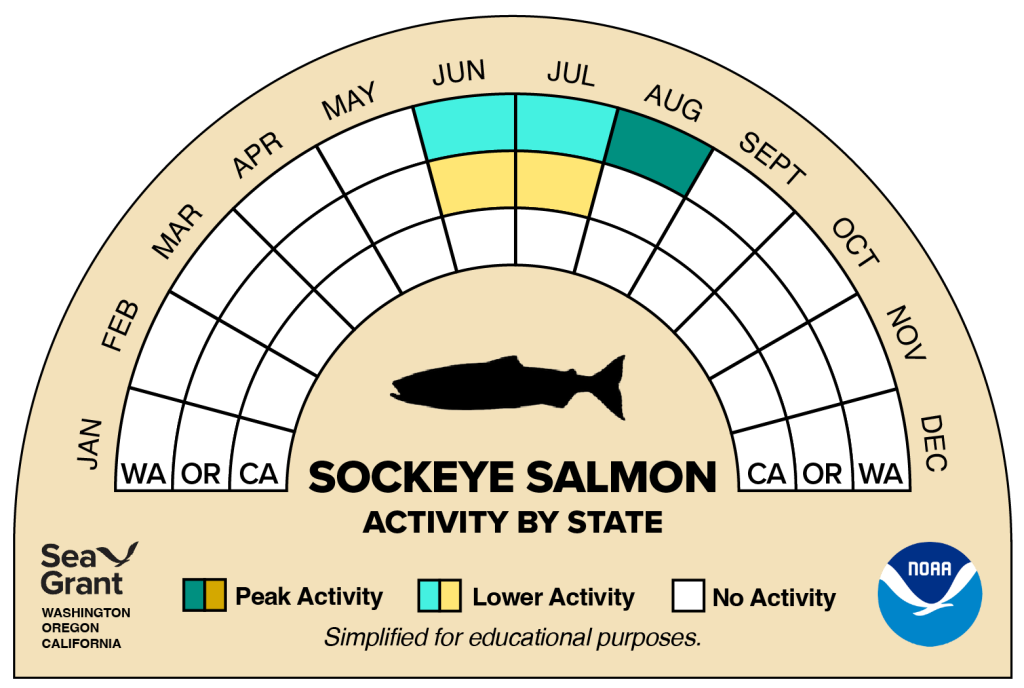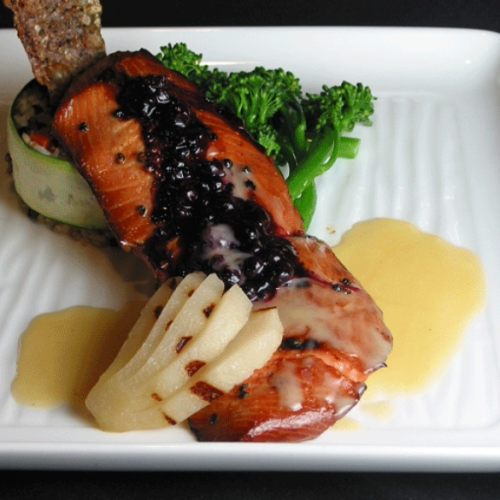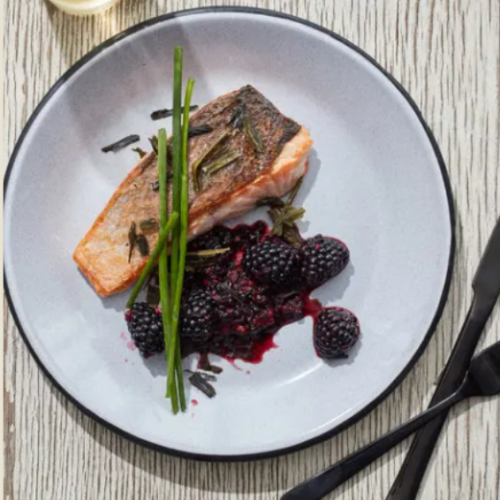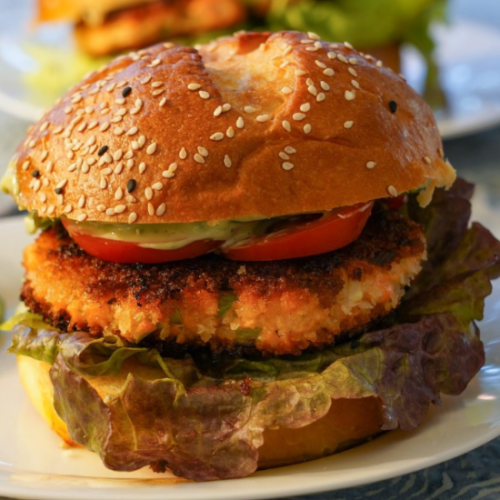Sockeye Salmon

Sockeye salmon, also referred to as red salmon, range from Alaska to the Deschutes River in Oregon. Like other species of Pacific salmon, sockeye spend the first stage of their lives in freshwater rivers and streams before migrating to the Pacific Ocean. Sockeye spend up to three years in freshwater streams, where they feed on zooplankton, insects and other invertebrates. Once they have migrated to the ocean, they consume zooplankton, squid and smaller fish. One of the smallest Pacific salmon species, adult sockeye salmon grow to reach 18 to 30 inches in length and weigh between four and 15 pounds. Common predators of sockeye salmon include marine mammals, seabirds, large fish and sharks. Sockeye salmon are identifiable by their silver sides, white bellies, and the bluish-green coloration along their backs. When returning to rivers to spawn, their heads turn green, their bodies bright red, and males develop humped backs and hooked jaws with many small, sharp teeth. A few populations of sockeye, known as Kokanee salmon, are landlocked and never leave freshwater.
Pacific salmon species occupy a unique niche in both ecological and cultural landscapes. Indigenous nations along the West Coast historically subsisted on salmon, and some present-day Indigenous peoples celebrate the significance of the species in First Salmon ceremonies. Sockeye salmon remains an economically and culturally important resource for West Coast Indigenous nations.
Overall availability
Sockeye salmon is fished in Oregon and Washington. It is available fresh seasonally, with the peak harvest occurring in the summer months, and available year-round canned, smoked, or frozen. Caviar can also be made from salmon roe.

Management
Sockeye salmon are fished in Washington and Oregon using gillnet and purse seine gear. Management of salmon fisheries is highly cooperative between NOAA Fisheries, The Pacific Fishery Management Council, Pacific Salmon Commission, and state Departments of Fish and Wildlife (WA, OR) along with the Northwest Indian Fisheries Commission and the Columbia River Inter-Tribal Fish Commission.








